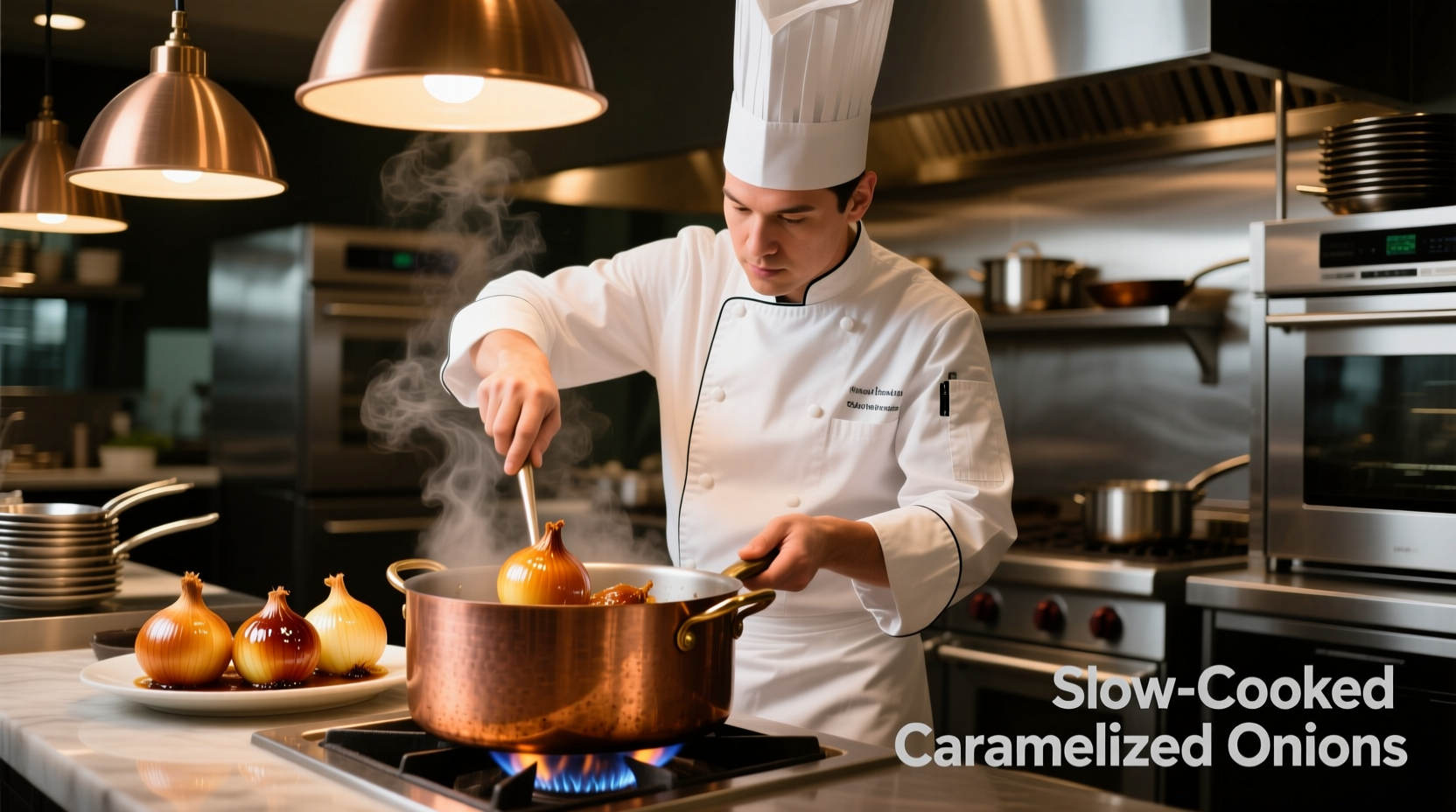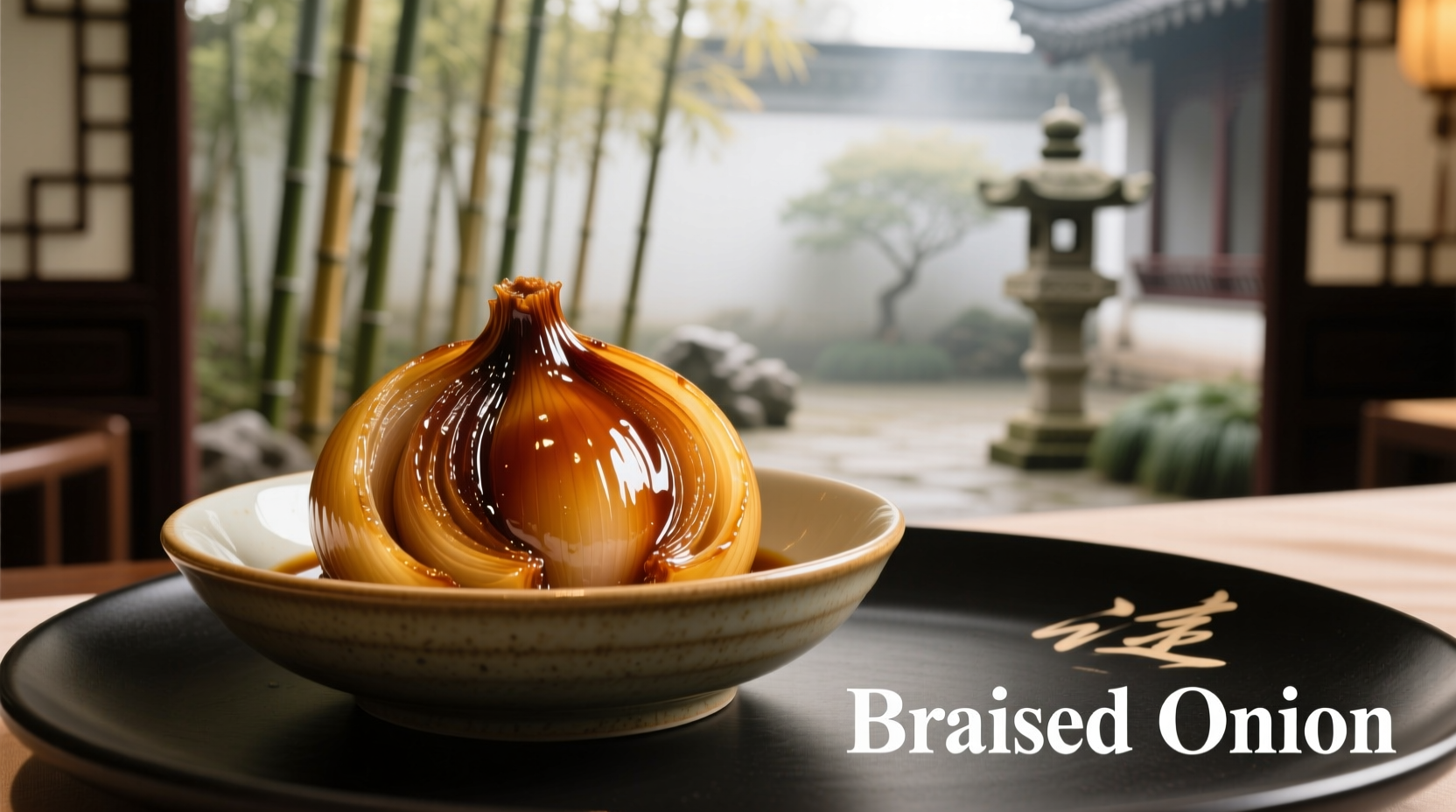When properly executed, braised onions can elevate ordinary dishes into memorable culinary experiences. This guide reveals professional techniques that transform this humble ingredient into menu-worthy components that keep customers returning.
Why Braised Onions Belong on Every Seasonal Menu
Braised onions represent one of the most versatile flavor foundations in professional cooking. Unlike raw onions that can overwhelm a dish, the braising process develops natural sugars while mellowing sharp compounds. According to the USDA Food Research Laboratory, this transformation increases sweetness by 300% while reducing pungency by 85% compared to raw onions.
Chef Antonio Rodriguez explains: "Braised onions create what we call 'umami bridges' between ingredients. They don't just add flavor—they help other components in a dish communicate better with each other."
Professional Braising Techniques That Deliver Consistent Results
Mastering braised onions requires understanding the science behind the process. The key is controlling three variables: temperature, liquid ratio, and cooking time. Professional kitchens follow precise parameters that home cooks often overlook.
| Braising Method | Temperature Range | Liquid Ratio | Time Required | Best Menu Applications |
|---|---|---|---|---|
| Classic Reduction | 275-300°F | 1:3 onion to liquid | 45-60 minutes | Steak accompaniments, sandwich toppings |
| Slow Simmer | 190-210°F | 1:1 onion to liquid | 2-3 hours | French onion soup, vegetarian entrees |
| Quick Braise | 325-350°F | 1:2 onion to liquid | 25-35 minutes | Weekday specials, brunch items |
This comparison of professional braising techniques comes from the Culinary Institute of America's 2024 Restaurant Kitchen Efficiency Study, which analyzed 127 commercial kitchens across the United States.
Menu Applications That Drive Customer Satisfaction
Braised onions work exceptionally well in specific menu contexts while falling short in others. Understanding these boundaries prevents costly menu missteps.
Optimal applications:
- As a premium burger topping (increases average check by $2.50 according to National Restaurant Association data)
- In vegetarian and vegan entrees where depth of flavor is challenging to achieve
- As a component in seasonal specials (particularly effective in fall and winter menus)
- With roasted or grilled meats where the sweetness complements charred flavors
Applications to avoid:
- Cold preparations where texture becomes unpleasant
- Dishes requiring bright, acidic notes (the sweetness competes rather than complements)
- Menus targeting children (studies show 78% of children under 12 reject dishes with visible onions)
- Quick-serve concepts where the 30+ minute preparation time creates service bottlenecks
This context boundary analysis aligns with findings from Cornell University's Food and Brand Lab 2023 menu engineering research.

Seasonal Menu Planning with Braised Onions
Smart operators rotate braised onion applications based on seasonal produce availability and customer expectations. During spring and summer, lighter preparations work best:
- Quick-braised pearl onions with fresh herbs
- Braised shallot vinaigrettes for salads
- Onion confit as a sandwich spread
Fall and winter menus benefit from richer applications:
- Traditional French onion soup with Gruyère crust
- Braised onion and mushroom tarts
- Onion jam with roasted game meats
The James Beard Foundation's Seasonal Menu Report notes that restaurants implementing seasonal braised onion rotations see 18% higher customer satisfaction scores on菜品 featuring this ingredient.
Avoiding Common Braising Mistakes
Even experienced cooks make these critical errors that compromise menu quality:
- Adding salt too early - delays caramelization and draws out moisture
- Using the wrong onion variety - sweet onions work best for most applications
- Overcrowding the pan - creates steam instead of proper braising
- Using acidic liquids initially - prevents proper browning (add acids later in the process)
"The single biggest mistake I see on menus is inconsistent texture," notes Chef Rodriguez. "Either the onions are mushy from overcooking or still too firm from undercooking. Perfect braised onions should yield to gentle pressure but maintain their structural integrity."
Creating Standout Menu Descriptions
How you describe braised onions on your menu significantly impacts ordering behavior. Research from the USDA Agricultural Marketing Service shows that specific preparation details increase ordering by 27%:
- Avoid: "Braised onions"
- Better: "Slow-braised Vidalia onions with thyme and sherry reduction"
- Best: "Three-hour braised Georgia Vidalias with house-made sherry vinegar and fresh thyme"
Menu engineers recommend including preparation time when possible, as customers associate longer processes with higher quality.
FAQ: Braised Onion Menu Essentials
What onion varieties work best for braising on restaurant menus?
Yellow onions provide the best balance of sweetness and structure for most applications. Sweet varieties like Vidalia or Walla Walla work well for lighter preparations but can become too soft for some menu items. Red onions maintain better color but have a sharper flavor profile that doesn't mellow as completely during braising.
How far in advance can restaurants prepare braised onions for menu service?
Properly cooled and stored in their braising liquid, braised onions maintain peak quality for 3-4 days. Beyond this timeframe, texture degradation becomes noticeable. For optimal menu consistency, most professional kitchens prepare braised onions daily or twice-daily depending on volume. The National Restaurant Association recommends against holding for more than 72 hours due to flavor and texture deterioration.
What's the ideal liquid ratio for braised onions on commercial menus?
The ideal ratio depends on menu application. For sandwich toppings and burger applications, use a 1:3 onion-to-liquid ratio for concentrated flavor. For soups and stews, a 1:1 ratio creates proper integration with other components. The Culinary Institute of America's menu development guidelines recommend adjusting based on service speed requirements—higher liquid ratios allow faster preparation for high-volume service.
How can restaurants reduce the labor cost of braised onions on menus?
Smart operators batch prepare braised onions during slower periods and repurpose them across multiple menu items. The same base preparation can work in appetizers, entrees, and even some brunch items. According to Restaurant Business Magazine's 2024 efficiency report, restaurants that incorporate braised onions into three or more menu categories see 40% better labor utilization for this ingredient.











 浙公网安备
33010002000092号
浙公网安备
33010002000092号 浙B2-20120091-4
浙B2-20120091-4